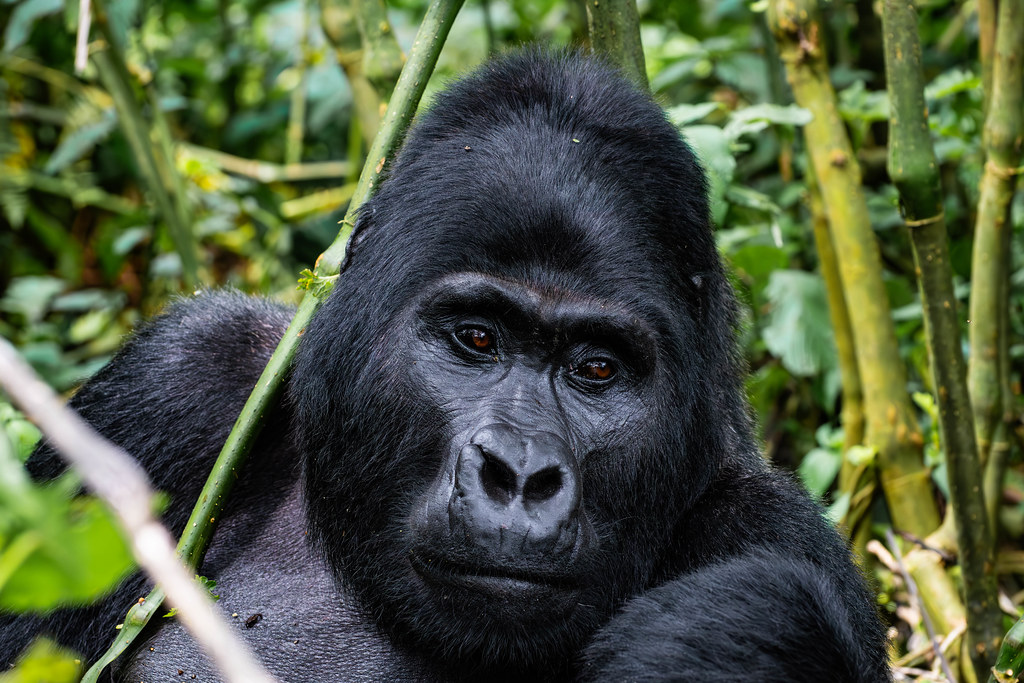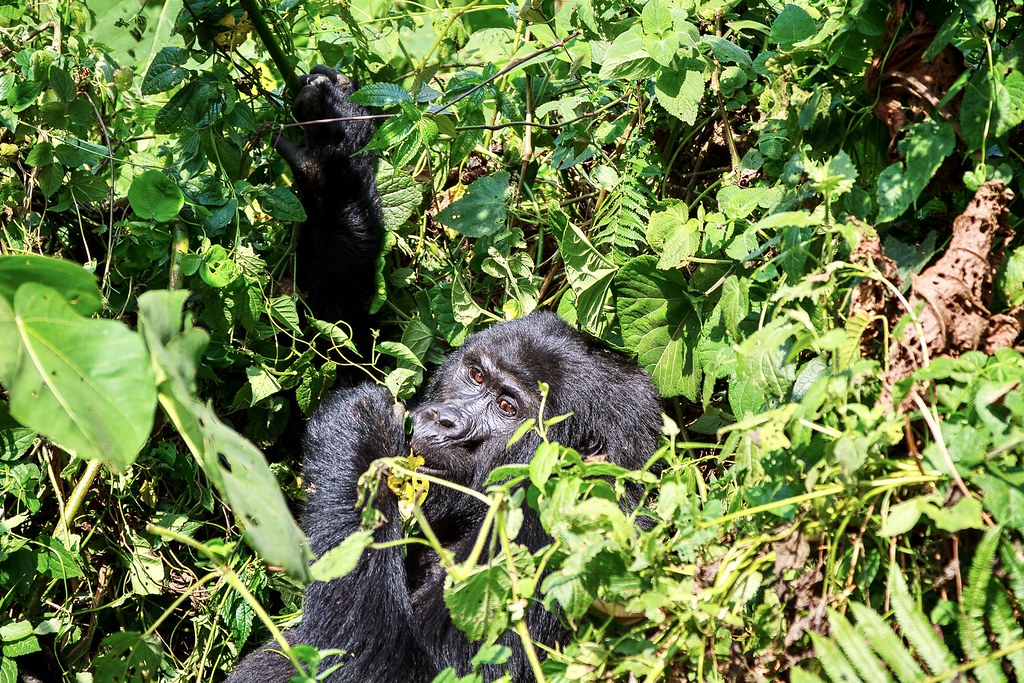 The Silverback Gorilla: The Noble Commander of the Gorilla Clan
The Silverback Gorilla: The Noble Commander of the Gorilla Clan
The silverback gorilla stands as a remarkable and captivating creature, celebrated for its incredible power, noble demeanor, and intriguing social dynamics. As the leading male of the gorilla group, the silverback takes on a vital role in ensuring the survival and welfare of the troop, steering and safeguarding its members with remarkable strength and compassion.
What is a Silverback Gorilla?
The term “silverback” describes the adult male gorilla that has reached the age of 12 and showcases a distinctive patch of silver-gray hair on its back. This unique silver coat, which lends the silverback its name, signifies maturity and establishes the male as the leader of his troop. Silverbacks stand out as the mightiest and most formidable figures within their troop, boasting a powerful physique that allows them to showcase remarkable strength and dominance when the situation calls for it.
While the term “silverback” specifically refers to adult male gorillas, the silverback’s role encompasses a rich tapestry of responsibilities beyond mere physical appearance. Their roles go far beyond their formidable appearance—they serve as the group’s leader, guardian, and key decision-maker. This role demands sharp intellect, seasoned experience, and a profound grasp of the intricate dynamics within the troop.
Characteristics of a Silverback Gorilla
Silverback gorillas stand as the giants among primates, showcasing an array of truly extraordinary physical traits. Adult males generally have a weight range of 300 to 485 pounds (140 to 220 kg) and stand approximately 5.5 to 5.9 feet (1.7 to 1.8 meters) tall. Their impressive forms are cloaked in dense, rugged black fur, but as they grow, they acquire the distinctive silver-gray mane that runs along their spine. Their hands and feet are robust and strong, adept at grasping branches or navigating their surroundings effortlessly.
Even with their impressive stature, silverbacks exhibit a remarkable gentleness and calmness towards their fellow group members. They display a caring and watchful demeanor, safeguarding the females and young ones in their group.
Social Dynamics and Interactions
Silverback gorillas thrive in family groups, usually made up of one dominant male, a number of females, and their young ones. The silverback’s role as a leader is essential for keeping harmony within the group. He takes on the thrilling role of safeguarding the troop from outside dangers, like predators, while also navigating the group’s encounters with other gorilla clans.
The Silverback’s Position as the Guide
The silverback asserts its supremacy with a blend of power, wisdom, and cleverness. He stands as the guardian of the group, ever watchful for threats, including lurking predators like leopards or competing gorilla factions. He also makes certain that food resources are evenly shared and that the group remains united as they journey through their territory.
The silverback commands respect and leadership among the members of the group. When conflicts emerge—be it regarding land, sustenance, or social dynamics—the silverback steps in to mediate and determine the course of action. His strength and confidence empower him to carry out these decisions with minimal opposition. Yet, his leadership transcends mere physical strength; it encompasses the trust and respect he earns from his family members.
 Connection and Relationships
Connection and Relationships
Gorillas express themselves using an array of vocal sounds, gestures, and facial cues. Silverbacks communicate through a range of vocalizations, including grunts and roars, to establish their dominance or alert their group to possible dangers. The silverback stands as a formidable figure, instilling a sense of safety within the group, with others turning to him for direction and defense.
Even with their commanding presence, silverbacks exhibit a gentle and caring nature towards their troop members. They are recognized for their tender grooming interactions with the females and infants, a practice that deepens the connections among the group.
Nutrition and Environment
Silverback gorillas, like all gorillas, thrive on a diverse diet of plant material, showcasing their connection to the lush environments they inhabit. Their diet is comprised of an exciting array of leaves, stems, fruit, and bamboo shoots. Their meals fuel them with the vitality required to support their impressive physiques. In their lush habitats, they dedicate a significant portion of their day exploring for sustenance and navigating through the thick greenery.
These creatures are often discovered amidst the lush greenery of tropical and subtropical forests in Central and East Africa. In the great outdoors, they roam through majestic mountain ranges, lush lowland forests, and mysterious swamps, where abundant food and shelter await them. In Rwanda, Uganda, and the Democratic Republic of Congo, silverbacks roam the renowned Virunga Mountains and the Bwindi Impenetrable Forest—two of the ultimate destinations for gorilla trekking.
Preserving the Majesty of Silverback Gorillas
Silverback gorillas, integral to the broader gorilla community, are designated as Endangered by the International Union for Conservation of Nature (IUCN). Only about 1,000 mountain gorillas remain in the wild, primarily residing in the breathtaking Virunga Mountains that stretch across Rwanda, Uganda, and the DRC.
The main challenges facing gorilla populations include habitat destruction, poaching, and disease. Thanks to dedicated conservation efforts like anti-poaching patrols, habitat restoration, and community-based tourism, the population of mountain gorillas has begun to rise. Gorilla trekking permits, essential for supporting these conservation initiatives, are vital for the ongoing survival of these magnificent creatures.
Alongside the initiatives of national parks and governments, local communities have played a vital role in safeguarding gorillas. The funds generated from gorilla trekking permits contribute to community development initiatives, including schools, health clinics, and infrastructure enhancements, cultivating a spirit of collective stewardship for wildlife conservation.
Exploring the World of Gorillas and Silverbacks: A Dream for Every Visitor
One of the most exhilarating ways to encounter silverbacks is through gorilla trekking in destinations such as Volcanoes National Park in Rwanda, Bwindi Impenetrable Forest in Uganda, and Virunga National Park in the DRC. Gorilla trekking offers an unforgettable journey, where adventurers can witness silverbacks and their families thriving in the wild.
The trek is an exhilarating journey, as visitors navigate through lush forests and ascend rugged mountains in search of these remarkable creatures. Encountering a silverback in the wild is an awe-inspiring moment that leaves you in deep reflection. Even with their impressive size and strength, silverbacks exude a sense of peace and curiosity, often welcoming visitors to witness their fascinating behaviors from a safe distance.
Conclusion: An Extraordinary Encounter with the Silverback Gorilla
The silverback gorilla embodies power, authority, and the intricate harmony of the natural world. As the leader of the gorilla troop, the silverback inspires awe and reverence from its family members and those lucky enough to witness its presence in the wild.
For those exploring Rwanda, Uganda, or the DRC, the chance to venture into the forests and meet these magnificent beings in their wild surroundings is an experience that will stay with you forever. The silverback stands as a guardian, a guiding force, and a caregiver, embodying the spirit of the wild—a symbol of the vital need for conservation and the relentless pursuit to safeguard these magnificent beings for those who will come after us.
